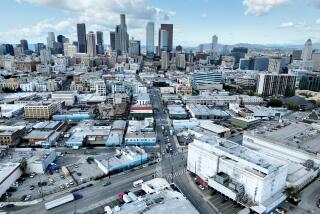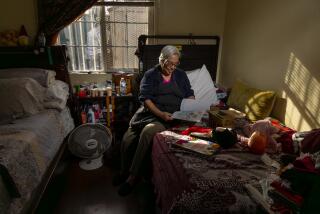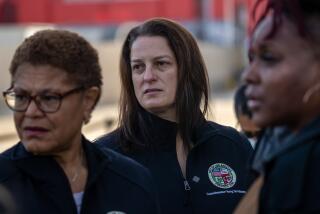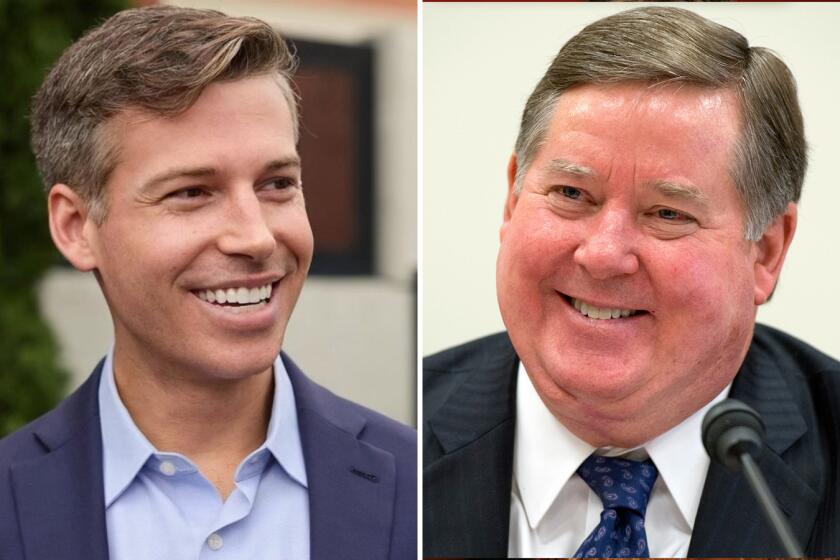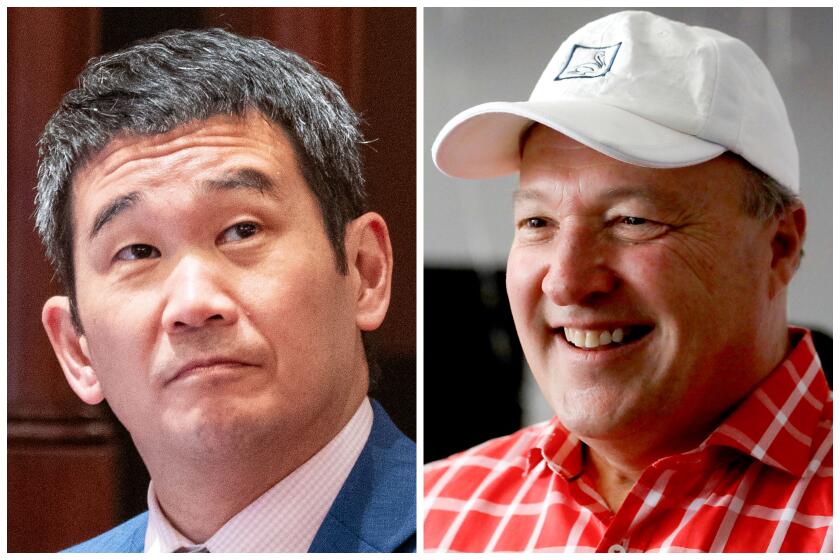First & Spring: Garcetti overrules his own appointees for Koreatown developer
It’s rare, but not unheard of, for Los Angeles mayors to veto decisions by the City Council.
It’s also not unusual for the council to veto a decision by one of the city’s commissions, whose members are selected by the mayor.
But Mayor Eric Garcetti did something recently that surprised activists, housing advocates and planning wonks: He rejected a decision by a panel of his own appointees.
Last month, Garcetti threw his support behind a controversial 27-story residential tower in Koreatown. He did so even though the people he put on the city Planning Commission unanimously rejected the apartment project, saying it would be too big for the surrounding neighborhood. On April 15, Garcetti notified the council he was disapproving his commissioners’ decision.
The mayor’s action is the latest example of city leaders helping to boost the value of a piece of property via generous zoning changes or other deviations from city planning rules. It also may signal how Garcetti, who hopes to add 100,000 housing units in the city by 2021, will approach other development projects enmeshed in controversy.
The Koreatown apartment tower has drawn fire from housing activists, an immigrants’ rights group and Fix The City, a group that sued the city over development issues in Hollywood and elsewhere. They stress the mayor’s own appointees viewed it as an example of bad planning. But the project is favored by council President Herb Wesson, who represents the area and is one of the city’s most powerful politicians.
Wesson aides say planning rules for the neighborhood are more than 15 years old. Large-scale residential buildings are already going up on nearby Wilshire and Olympic boulevards, within a few blocks of the tower site.
“You have density naturally occurring in this neighborhood, and we need to be able to build housing,” said Andrew Westall, a high-level aide to Wesson.
Michael Hakim, the developer of the tower, spent nearly a decade seeking city approval for the project, planned for Catalina Street just south of 8th. He first proposed a 35-story building on the site, which is surrounded by apartments of two to five stories.
Hakim wanted to build 270 apartments, roughly double the amount permitted on the property under existing planning rules. He sought a zoning change and an amendment to the general plan, which serves as the overall development blueprint for the city.
The amendment was needed to redesignate Hakim’s property as a regional center, which city planners describe as a place with major public transit options, “a significant number of jobs and many non-work destinations.” L.A. has about two dozen regional centers in places such as Century City, Century Boulevard near Los Angeles International Airport and a commercial stretch of Ventura Boulevard in the San Fernando Valley.
In 2009, Hakim’s proposal was rejected by the nine-member Planning Commission, made up of appointees of then-Mayor Antonio Villaraigosa. At the time, Villaraigosa concurred with that decision.
The proposal languished for five years before returning to the city planning commission, now made up of Garcetti appointees. By then, Hakim had reworked the project, shaving off eight stories but keeping it at 269 apartments.
In December, the panel rejected the reworked plan, saying it was still too big. Commissioners argued it would make more sense if the high-rise were on Wilshire Boulevard, two blocks to the north, which is served by a subway and multiple bus lines. Such a huge project would be “wildly inappropriate” for the location, said Commissioner Maria Cabildo, an affordable housing developer.
“I’m probably one of the biggest advocates on this commission for housing — market rate and affordable — and I just cannot in any way feel good about this project,” she said during the hearing.
At one point, Cabildo compared the tower to a tumor. Other commissioners said it would create traffic problems and loom over its neighbors, casting shadows on surrounding buildings.
Four months later, Garcetti formally disapproved the commission’s denial of Hakim’s request. Under city rules, the mayor’s action had the effect of reducing the number of City Council votes Hakim needed for approval, from 12 to 10, officials said. On Tuesday, the council approved the project on an 11-0 vote.
Backers of the project say it will transform a stretch of Koreatown filled with blighted properties and low-income households. But Laura Lake, with the advocacy group Fix The City, said the decision to double the property’s density is “a giveaway to one favored party.”
The city is “giving this person special entitlements that nobody with comparable property has,” Lake said. “And it’s not even on a commercial street, where regional centers usually are. It’s on a residential street.”
Garcetti spokesman Jeff Millman declined to respond to Lake’s assertions, saying instead: “We agree with council President Wesson, who represents the area, that this project will add much-needed housing and economic activity to an area well-served by transit infrastructure.”
Lake’s group contends Garcetti overstepped his legal authority and says it is now weighing its legal options. Hakim said he hasn’t discussed the project with anyone in the mayor’s office. He argues Koreatown has long been neglected and needs the kind of new investment and density his project would provide.
“I’m proud of the mayor. He really has foresight,” Hakim said. “He sees the future of L.A. to be a city of the 21st century.”
When the council approved the project, Hakim agreed to contribute $1 million to the city’s affordable housing trust fund, which helps pay for the construction of homes for low-income residents. Hakim also committed $250,000 to a fund for community projects in Wesson’s district.
Lake, the Fix the City activist, said Hakim’s contributions are “chump change,” considering the increased value the project will realize as a result of the city’s actions. “They’re selling the city out cheaply and illegally,” she added.
More to Read
Sign up for Essential California
The most important California stories and recommendations in your inbox every morning.
You may occasionally receive promotional content from the Los Angeles Times.
